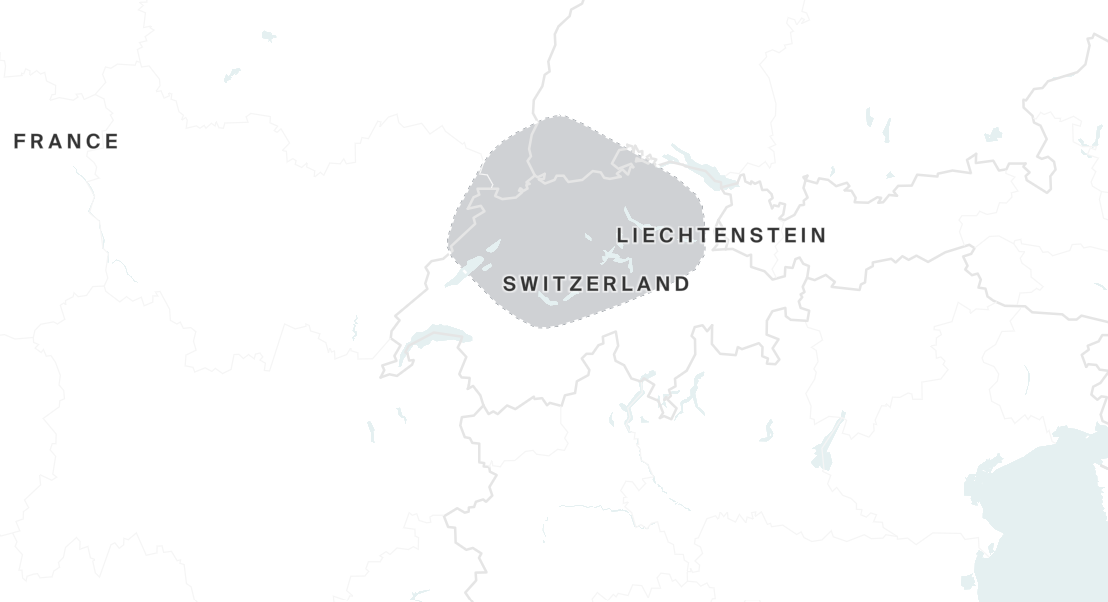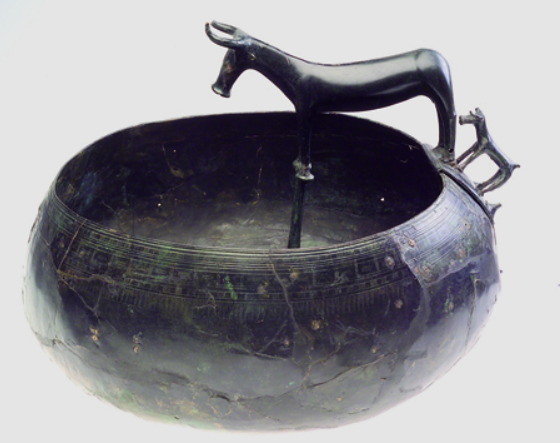What is Central Switzerland DNA Ethnicity on Ancestry?
The results of our AncestryDNA tests may sometimes be what we expect or on occasion may be a big surprise. Either way, often we need a little more information regarding some of the regions that arise in our ethnicity estimates.

One region that is not at all uncommon is the Central Switzerland DNA region. Those who still live in this region already understand all about its history and culture. There are others, however, who may never have even visited or in fact been aware that they have ancestors from that area.
In this post we will go into more detail with regards to the history, geography and culture of the Central Switzerland region. We will also discuss what it means to be from this region and how easy or difficult it might be to trace our roots in the Central Switzerland Region.
What Is the Central Switzerland DNA Region?
The Central Switzerland DNA region as the name would suggest concentrates mainly on the Alpine nation of Switzerland. It is mainly focused on the north central region of the country and does bleed over into southwestern Germany and parts of central eastern France.

Central Switzerland Region History
Switzerland Prehistory
Archaeology suggests that the first presence of hominids in the Swiss region dates back around 150,000 years. The earliest recognized tribes in the area would go on to form the Hallstatt and La Tene cultures.
Hallstatt Culture
The Hallstatt culture were a western and central European peoples who thrived in the region between the 12th and 8th centuries BC. They are thought to have formed from the earlier Urnfield culture. This central European culture is thought to have been Celtic and may have some well established trade routes into Greece and France.

La Tene Culture
The La Tene culture would follow the Hallstatt culture as the main group in western and central Europe. It was relatively short-lived, developing around 450 BC and thriving up until the Roman conquest in the 1st century BC.
They had considerable Mediterranean influences from the Greeks in pre-Roman Gaul, the Etruscans, and the Golasecca culture. Their artistic style nevertheless did not depend on those Mediterranean influences.
The Helvetii
One of the most notable tribal groups in the Swiss region were the Helvetii. They were a Celtic tribe who thrived in the Swiss Plateau. In the 1st century BC the Romans would arrive and Julius Caesar in his writings claimed this tribal group was divided into 4 subgroups in the region.
By 52 BC the Helvetii were fully subjugated by the Romans. An uprising was attempted by the tribe in 68 AD but they were defeated. As with most of the Gaul region this tribe had become largely Romanized by the 2nd century AD.
French & German Tribes
In the late 3rd century AD the Swiss plateau would see invaders that sought to topple the Romans; this was in the form of the Alemanni from Germany and the Burgundians from the Burgundy region of France. These two tribes would eventually establish settlements in the region during the 5th and 6th centuries AD. The remaining Helvetii groups were assimilated into these new tribal powers.
Throughout the rest of the sixth, seventh and eighth centuries, Swiss regions continued under Frankish (France) control. This was under the Merovingian and Carolingian dynasties. The Frankish Empires extension under Charlemagne was divided by the Treaty of Verdun in 843. This would create the territories of Middle Francia and East Francia in what is today Switzerland. They would be reunified under the Holy Roman Empire around 1000 AD.
How Did You Get Central Switzerland Region DNA?
If you already know that you had family who came from Central Switzerland or any of the bordering states then you know why you have Central Switzerland region DNA. If this result came as a surprise you may not know how exactly you came by DNA from this region.
If you have a sizable percentage of DNA from this region then it is likely you have an ancestor who was born in or close to the country of Central Switzerland.
Is the Result Accurate?
When it comes to ethnicity estimates the higher the percentage you have from a certain region the more likely it is to be accurate. If your percentage is low, however, then it is harder to pinpoint exactly where your most recent ancestors came from.

A low result could mean a distant ancestor from that region. It is best to focus on your highest rated region's matches to determine where your ancestors came from more recently. A low percentage can often be hard to locate because the ancestor in question could be many generations back in your tree.
How to Research my Ancestry from These Regions
The results of a DNA ethnicity test are of course a great place to start especially if there is an unexpected result found in the report. As always of course the DNA cannot tell the whole story and we need to actually do the research work.
A percentage on an ethnicity estimate means very little unless you follow through and start building up your family tree. The relevant ancestors may be several generations back and it may take a lot of research to discover who they were.
If you have specific regions mentioned in your report then you have a good idea of where your ancestor may have originated from. Ancestry DNA even has migratory information from some of these regions through to the final settlement places in the United States or elsewhere in the world.
Using Ancestry you may be able to determine not only who your ancestors were but where they are from in the region and perhaps the reason they decided to move.
Swiss Migration
The first Swiss person to settle in what is now the United States was Theobald Diebold von Erlach. The history of the Amish church began with a division in Switzerland between Swiss and Alsatian Anabaptists in 1693. This was led by Jakob Ammann, a native of Erlenbach im Simmental and name sake of the Amish religious movement.
During the late 18th and early 19th centuries, migration of Swiss farmers would form colonies in Russia and the United States. Prior to 1820 there were roughly 25,000 – 30,000 Swiss entering North America. Many of them would settle in the region that would become Pennsylvania and the Carolinas.
Final Thoughts
The Central Switzerland DNA region is a region that for centuries was under the control of Celtic tribes until the Romans conquered the region. As Rome fell they were replaced by Germanic and Frankish tribes whose influence would continue from that point on.
Centrally located in western Europe Switzerland is considered extremely picturesque and a region that has largely tried to stay out of major conflicts of the region. They successfully avoided invasion in either of the World Wars of the 20th century.
Link To or Reference This Page
We spent a lot of time downloading, cleaning, merging, and formatting the data that is shown on the site.
If you found the data or information on this page useful in your research, please use the tool below to properly cite or reference Name Census as the source. We appreciate your support!
-
<a href="https://namecensus.com/blog/what-is-central-switzerland-dna-ethnicity-on-ancestry/">What is Central Switzerland DNA Ethnicity on Ancestry?</a>
-
"What is Central Switzerland DNA Ethnicity on Ancestry?". NameCensus.com. Accessed on May 7, 2024. https://namecensus.com/blog/what-is-central-switzerland-dna-ethnicity-on-ancestry/.
-
"What is Central Switzerland DNA Ethnicity on Ancestry?". NameCensus.com, https://namecensus.com/blog/what-is-central-switzerland-dna-ethnicity-on-ancestry/. Accessed 7 May, 2024
-
What is Central Switzerland DNA Ethnicity on Ancestry?. NameCensus.com. Retrieved from https://namecensus.com/blog/what-is-central-switzerland-dna-ethnicity-on-ancestry/.
